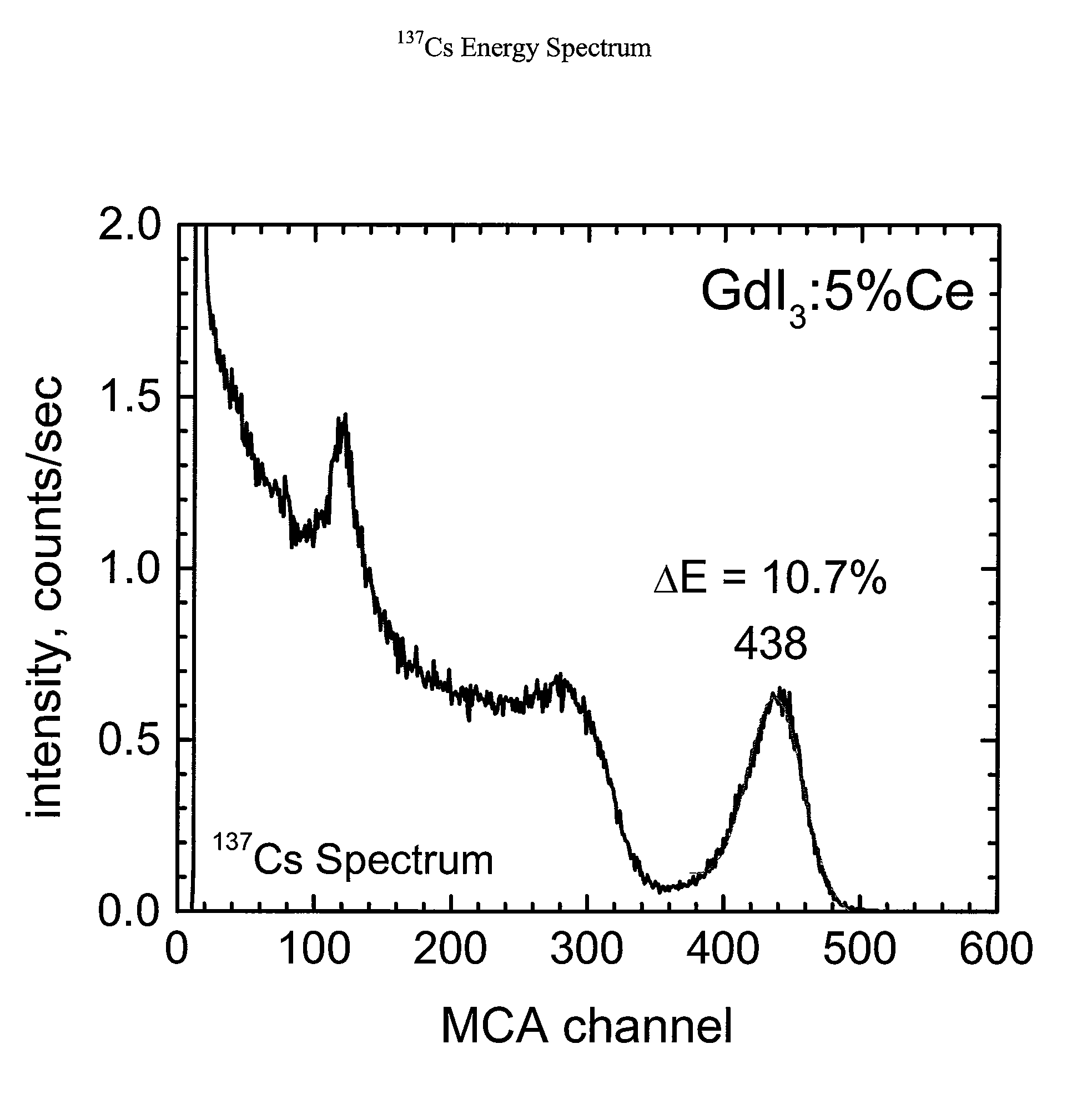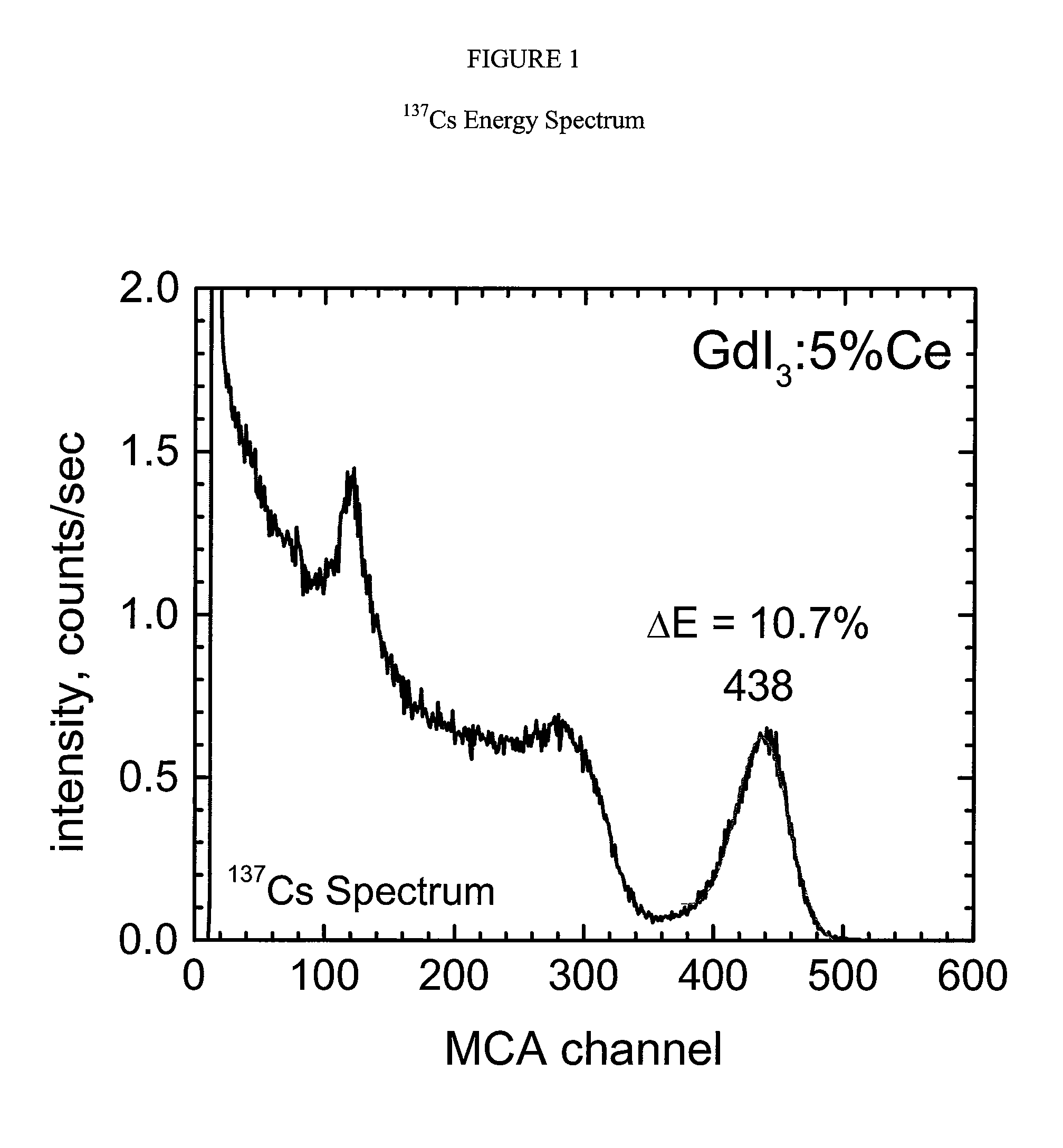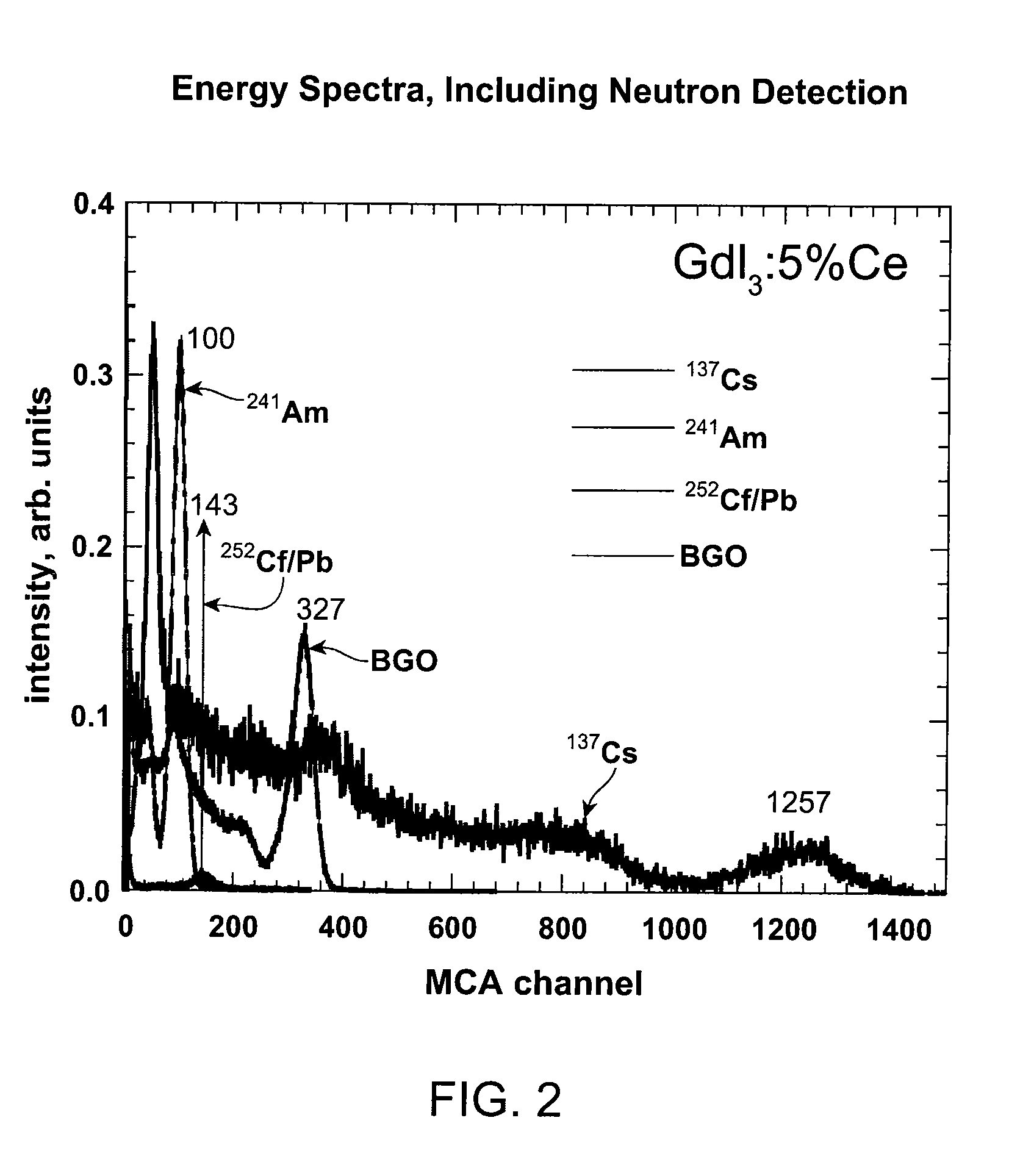Gadolinium halide scintillators
a technology of gadolinium halide and scintillator, which is applied in the field of scintillators, can solve the problems of inability to meet the requirements of any commercially available scintillator, the inability to predict the actual use of scintillation spectrometer and various practical applications, and the specific composition/formulation having both scintillation characteristics and physical properties, etc., to achieve high stopping efficiency (attenuation), high detector
- Summary
- Abstract
- Description
- Claims
- Application Information
AI Technical Summary
Benefits of technology
Problems solved by technology
Method used
Image
Examples
example 1
[0063]The present example provides a method for growing and provides characterization for GdI3 scintillator crystals. The following examples are offered by way of illustration, not by way of limitation.
Crystal Growth of GdI3
[0064]GdI3 has hexagonal crystal structure and its density is approximately 5.2 g / cm3. The compound melts congruently at about 925° C. and therefore its crystals can be grown using melt based methods such as those described by Bridgman and Czochralski. This is fortunate because these melt-based processes are well suited for growth of large volume crystals (Brice, Crystal Growth Processes, Blackie Halsted Press (1986)). The Bridgman method has been used for growing GdI3 crystals because this technique is easy to implement, and can provide a good indication of the feasibility of producing high quality crystals of GdI3 from the melt. Both the vertical and horizontal orientations of the Bridgman method can be used in producing crystals of the present invention. The ...
PUM
 Login to View More
Login to View More Abstract
Description
Claims
Application Information
 Login to View More
Login to View More - R&D
- Intellectual Property
- Life Sciences
- Materials
- Tech Scout
- Unparalleled Data Quality
- Higher Quality Content
- 60% Fewer Hallucinations
Browse by: Latest US Patents, China's latest patents, Technical Efficacy Thesaurus, Application Domain, Technology Topic, Popular Technical Reports.
© 2025 PatSnap. All rights reserved.Legal|Privacy policy|Modern Slavery Act Transparency Statement|Sitemap|About US| Contact US: help@patsnap.com



